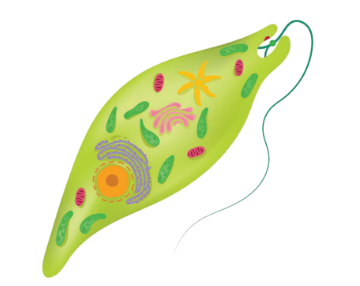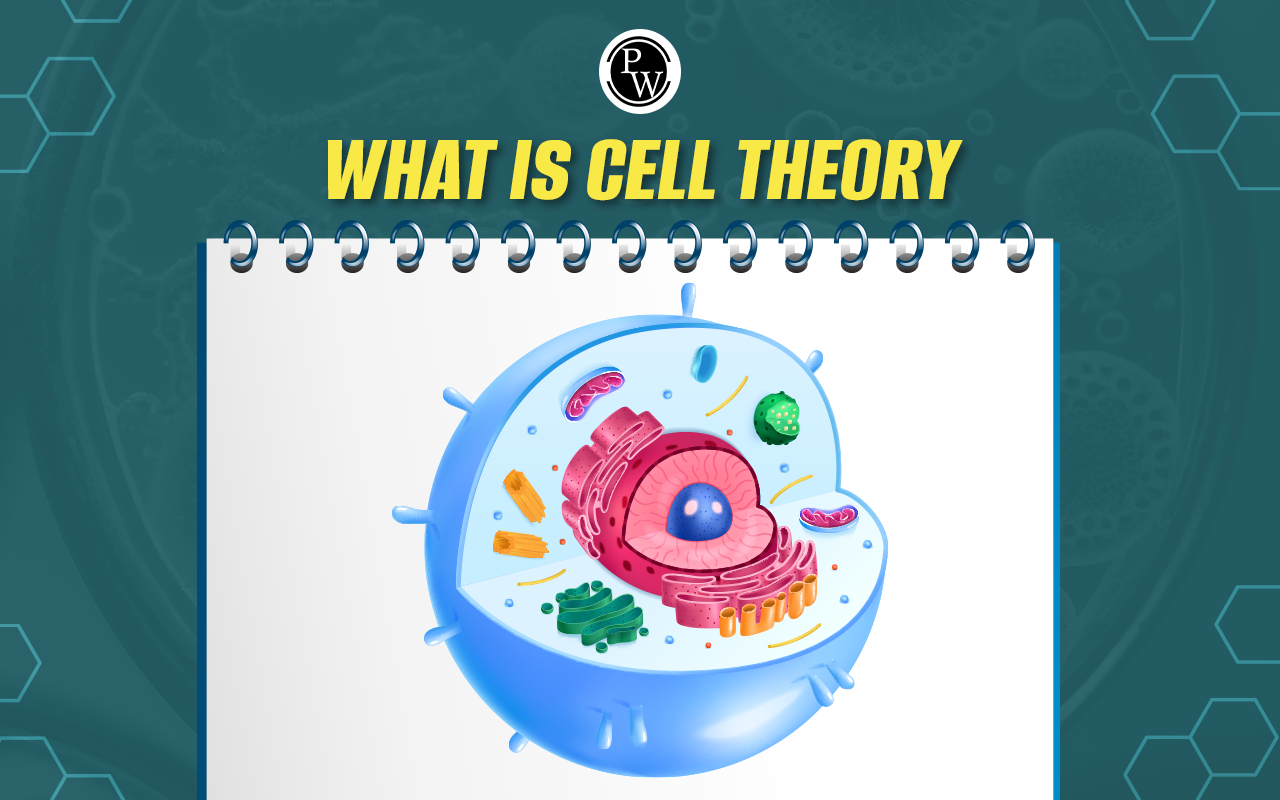
Euglenoids are single-celled, flagellated organisms found primarily in freshwater environments. They possess both plant-like and animal-like characteristics, featuring chlorophyll for photosynthesis and flagella for movement. This unique combination makes them an important subject of study, bridging the gap between plant and animal life.
Euglenoids are significant for the NEET Exam as they illustrate key biological concepts such as cellular structure, mixotrophic nutrition, and evolutionary adaptations.Definition of Euglenoids
Euglenoids are a group of mostly unicellular, flagellated microorganisms primarily found in freshwater habitats, though some are found in marine waters. These organisms are particularly interesting because they exhibit both plant-like and animal-like characteristics. Euglenoids, such as Euglena, contain chloroplasts and perform photosynthesis like plants but can also switch to heterotrophic feeding when sunlight is unavailable.Classification of Euglenoids
Euglenoids belong to the kingdom Protista and are placed under the phylum Euglenophyta. The genus Euglena, from which euglenoids get their name, is the most studied group within this phylum. Based on their structure and characteristics, euglenoids have unique features distinguishing them from other protists, algae, and flagellates.| Kingdom | Protista |
| Phylum | Euglenophyta |
| Class | Euglenoidea |
| Order | Euglenales |
| Genus | Euglena |

Structure of Euglenoids
The structure of Euglenoids is unique and contributes to their adaptive versatility:- Cell Shape and Pellicle : Euglenoids have an elongated cell body covered by a flexible, protein-rich layer called the pellicle, rather than a rigid cell wall. This pellicle provides support and allows the cell to twist and change shape as it moves.
- Flagella : Euglenoids possess one or two flagella, which aid in movement. Typically, only one flagellum is visible externally, while the other is shorter and located within the reservoir (a pocket-like structure inside the cell).
- Chloroplasts : The presence of chloroplasts in Euglenoids allows them to perform photosynthesis, using sunlight to produce energy. These chloroplasts contain the pigment chlorophyll, giving Euglenoids a green color similar to plants.
- Eyespot (Stigma) : Euglenoids have an eyespot near the base of the flagellum, which is sensitive to light. The eyespot helps Euglenoids detect light sources, enabling them to move toward optimal lighting for photosynthesis.
- Contractile Vacuole : Euglenoids also have a contractile vacuole that helps maintain osmotic balance within the cell by expelling excess water.
Nutrition of Euglenoids
Euglenoids are notable for being mixotrophic, which means they can switch between autotrophic and heterotrophic modes of nutrition based on environmental conditions.- Autotrophic Nutrition : When exposed to sufficient light, euglenoids carry out photosynthesis using chloroplasts. They capture sunlight and convert carbon dioxide and water into glucose, similar to plant cells.
- Heterotrophic Nutrition: In the absence of light, euglenoids switch to heterotrophic nutrition, absorbing dissolved organic matter from the environment. They can ingest small particles or feed on organic molecules, making them adaptable to changing conditions.
Locomotion of Euglenoids
Euglenoids use a type of movement known as euglenoid movement or metaboly , which is a wavelike motion that allows the cell to move through the water. This form of movement is facilitated by the flexible pellicle, which lets the cell contract and expand, helping it glide. Additionally, the flagellum propels the Euglenoid through water, allowing it to navigate towards light sources or areas with abundant nutrients.Reproduction of Euglenoids
Euglenoids reproduce primarily through asexual reproduction, specifically by binary fission. During this process, the Euglenoid cell elongates, and its nucleus divides through mitosis. The cell then divides longitudinally to form two identical daughter cells. This mode of reproduction is relatively simple and allows Euglenoids to multiply quickly under favorable conditions.MCQs of Euglenoids
Q1. Euglenoids have flexible body due to the presence of;
- chlorophyll.
- cell wall.
- pellicle.
- cellulose.
Q2. Which of these bears two unequal flagella?
- Euglenoids
- Slime molds
- Diatoms
- Dinoflagellates
Q3. Which of the following is NOT present in Euglena?
- Chloroplasts
- Flagella
- Cellulosic cell wall
- Proteinaceous pellicle
Answers of MCQs of Euglenoids
Ans1 . Pellicle,| NEET Exam Important Links | |
|---|---|
| NEET Biology Syllabus | NEET Biology Diagrams |
| NEET Biology MCQ | NEET Biology Chapter wise Weightage |
| NEET Biology Notes | NEET Previous Year Question papers |
Euglenoids FAQs
Q. What is unique about euglenoids?
Ans. Euglenoids are unique because they exhibit both plant-like and animal-like characteristics. They possess chlorophyll pigments for photosynthesis, giving them a green coloration, and have flagella for mobility. This combination allows them to thrive in diverse aquatic environments.
Q. What do euglenoids feed on?
Ans. Euglenoids primarily feed on a combination of organic matter and light. They can utilize sunlight to produce their own food through photosynthesis and, when light is not available, they absorb dissolved organic nutrients from their surroundings, including bacteria and small algae.
Q. Can euglenoids produce oxygen?
Ans. Yes, euglenoids can produce oxygen during photosynthesis. When they use sunlight to convert carbon dioxide and water into glucose, oxygen is released as a byproduct, contributing to the oxygen supply in their aquatic environments.
Q. What are the characteristic features of euglenoids?
Ans. Characteristic features of euglenoids include their flexible pellicle, which allows for shape changes; the presence of chloroplasts containing chlorophyll; an eyespot (stigma) for light detection; and one or two flagella for movement. They also have a contractile vacuole for osmoregulation, enabling them to manage water levels within their cells.
Q. How do euglenoids reproduce?
Ans. Euglenoids primarily reproduce asexually through binary fission. In this process, a single euglenoid cell duplicates its genetic material and divides into two identical daughter cells. This method of reproduction allows for rapid population growth, especially in favorable conditions.
🔥 Trending Blogs
Talk to a counsellorHave doubts? Our support team will be happy to assist you!

Check out these Related Articles
Free Learning Resources
PW Books
Notes (Class 10-12)
PW Study Materials
Notes (Class 6-9)
Ncert Solutions
Govt Exams
Class 6th to 12th Online Courses
Govt Job Exams Courses
UPSC Coaching
Defence Exam Coaching
Gate Exam Coaching
Other Exams
Know about Physics Wallah
Physics Wallah is an Indian edtech platform that provides accessible & comprehensive learning experiences to students from Class 6th to postgraduate level. We also provide extensive NCERT solutions, sample paper, NEET, JEE Mains, BITSAT previous year papers & more such resources to students. Physics Wallah also caters to over 3.5 million registered students and over 78 lakh+ Youtube subscribers with 4.8 rating on its app.
We Stand Out because
We provide students with intensive courses with India’s qualified & experienced faculties & mentors. PW strives to make the learning experience comprehensive and accessible for students of all sections of society. We believe in empowering every single student who couldn't dream of a good career in engineering and medical field earlier.
Our Key Focus Areas
Physics Wallah's main focus is to make the learning experience as economical as possible for all students. With our affordable courses like Lakshya, Udaan and Arjuna and many others, we have been able to provide a platform for lakhs of aspirants. From providing Chemistry, Maths, Physics formula to giving e-books of eminent authors like RD Sharma, RS Aggarwal and Lakhmir Singh, PW focuses on every single student's need for preparation.
What Makes Us Different
Physics Wallah strives to develop a comprehensive pedagogical structure for students, where they get a state-of-the-art learning experience with study material and resources. Apart from catering students preparing for JEE Mains and NEET, PW also provides study material for each state board like Uttar Pradesh, Bihar, and others
Copyright © 2025 Physicswallah Limited All rights reserved.
Get App









